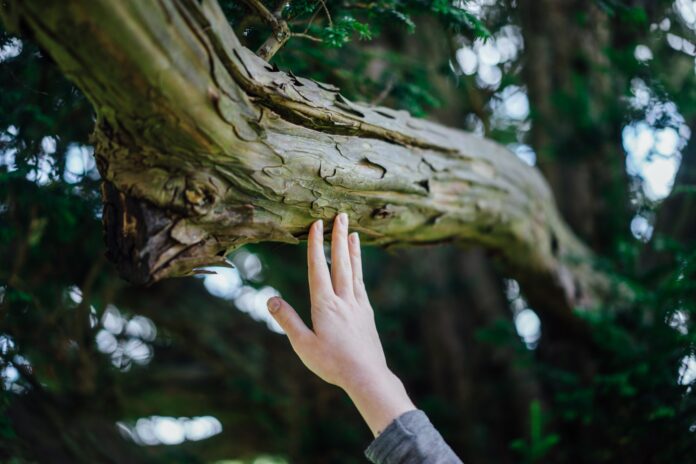Feeling out of touch with your environment? Experiment with ecosomatic listening to communicate with nature—and nature just may communicate back.
When I was a visiting professor in Malaysia, a student approached my desk at the end of class one day with a question. He was among the Indigenous people who had accepted the government’s offer of a free college education in exchange for giving up land rights.
“Why is learning to read important?” he asked.
Written words were not part of his upbringing. He grew up in the rugged rainforests of Sarawak on the island of Borneo. He needed to be informed about approaching tigers, rising rivers, possible tsunamis, edible sections of bamboo, and using the stem of tubu medicinally. He learned to “read” leaf movement and animal scat.
My own education on communicating with nature differs from his. Unlike this student, I may not be able to sense a tiger until its hot breath and piercing eyes land upon me, but I can readily navigate a busy highway with numerous road signs and a chaos of speeding cars and trucks.
Culture and circumstance determine what is worth our attention. For most of us, that includes electronic screens, driving, shopping, and sitting at a desk. Our sensory intelligence—what we choose to focus on and how we process the information coming in through the five senses—functions well enough. We recognize phenomena like hunger, thirst, tiredness, stress, and pain. But we overlook the greater field of what is perceivable. Given climate challenges, experiencing more of this field may be crucial toward our individual wellbeing as well as a sustainable future for us all.
Analysis
While this article isn’t about physical transportation, it is about mental and emotional transportation. The author communicates the importance of not imposing your own bias on the environment. I find it incredibly interesting that her Malaysian indigenous student was questioning her about the importance of reading. In Western culture, it’s a given that literacy is essential to our everyday life. That is because we need to use it everyday to communicate with one another. But this is just one form of communication. We give so much power to reading. What would happen if everyone suddenly lost their ability to read? Or how does communication change with the loss of one of the senses? Blind people use their fingers to read. Is there some other way we could communicate with another part of the body? Birds communicate through sounds and chirps. We speak with our mouths. Could we use smells as another way to communicate?
The way the author communicates with nature is fascinating. Her use of eco somatic listening completely changes her interaction with her surroundings. In my opinion, our increased reliance on technology has steered us away from listening to our bodies and our environments in a fundamental way. We now depend on our technology to tell us how we feel instead of relying on our engrained sense of intuition. How can we use this relationship with nature? Can this type of listening impact the way we transport people through rough terrain?




